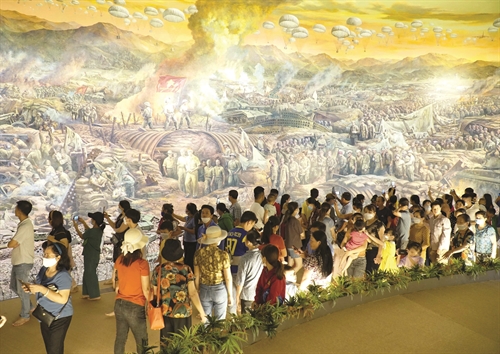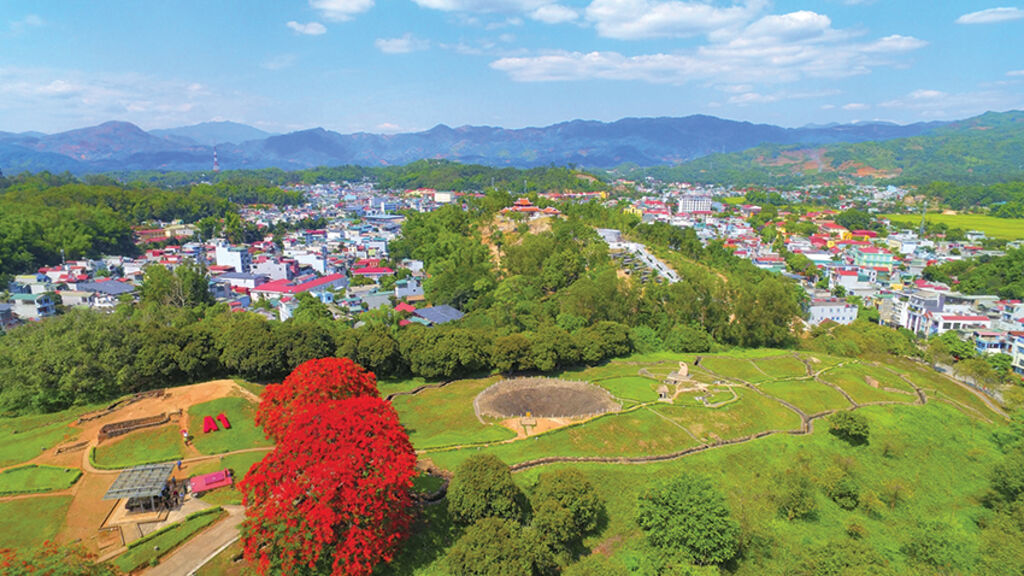 |
| Overview of A1 Hill__Photo: Xuan Tu/VNA |
With 45 component relics, the Dien Bien Phu battlefield relics complex has contributed to not only reminding Vietnamese people and young generations about traditions and the heroic memories that resounded across the five continents and shook the globe but also bringing economic value to Dien Bien province.
The relics complex was ranked as a special national relic site in 2009. Now it is one among more than a hundred of special national relic sites and makes great contributions to the development of tourism of Dien Bien province. During these days when the nation is celebrating the 70th anniversary of the Dien Bien Phu Victory (May 7, 1954 - May 7, 2024), people from all over the country flock to Dien Bien province to visit the old battlefield.
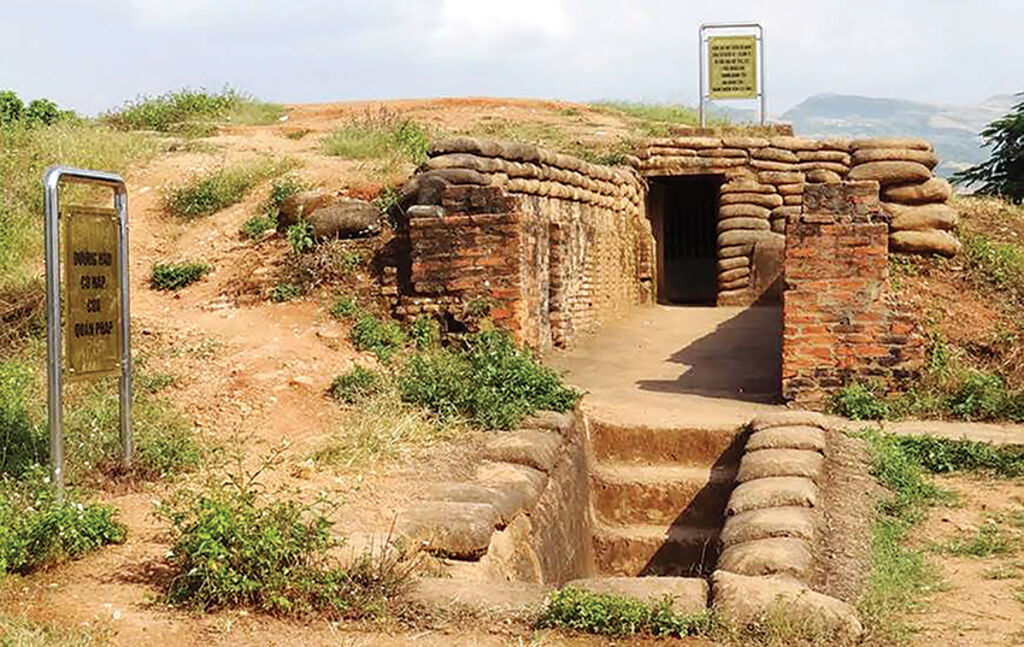 |
| A gate to the trench system of French troops on A1 Hill__Photo: https://dienbien.gov.vn |
Among the 45 relic sites spreading across Dien Bien Phu city and Dien Bien and Tuan Giao districts are the command post of General-Commander Vo Nguyen Giap, A1 Hill and General de Castries’s bunker. These relics are all evocative of the anti-French colonialism battle of the Vietnamese people’s courage and wisdom, and invincible strength under the leadership of the Communist Party of Vietnam and President Ho Chi Minh. Therefore, visiting Dien Bien Phu battlefield relics is what every visitor always wants when setting foot on Dien Bien province.
The command post of the Dien Bien Phu Campaign, hidden in the forest at the foot of Pu Don hill in Dien Bien district, about 40 kilometers from the city center, is the simple and untouched workplace of General-Commander Vo Nguyen Giap and members of the Campaign Command.
From the headquarters, going up to the highest point, visitors can view the entire Dien Bien Phu city, Muong Thanh valley and former French bases such as Him Lam, Independence, A1 and C1 hills.
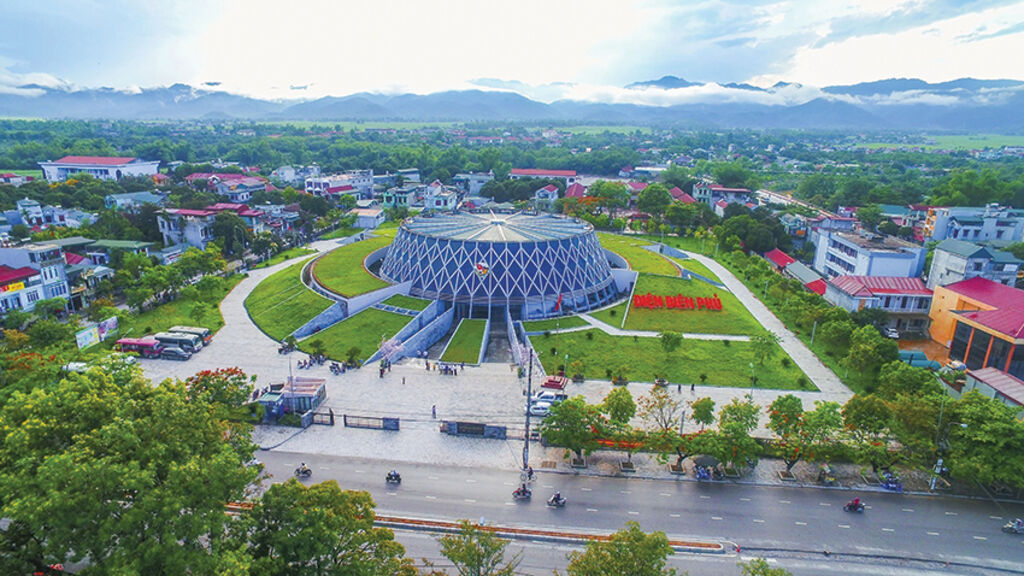 |
| Dien Bien Phu Victory Museum with a roof evocative of the hat of Vietnamese soldiers__Photo: VNA |
The Victory Monument in Muong Phang, where exists a beautiful cherry garden blooming during spring, is a recommended stop for visitors.
The Museum of Dien Bien Phu Victory, situated on Vo Nguyen Giap street in Muong Thanh ward, Dien Bien Phu city, has the shape of the hat worn by Dien Bien Phu combatants. Display on 1,250 square meters of the museum’s first floor are some 1,000 documents, artefacts, photos and maps about the historic Dien Bien Phu battle. The highlight of the museum is a panoramic oil on canvas painting epicting the Dien Bien Phu Campaign - the largest in Southeast Asia and one of the three largest panoramic paintings in the world. It features 4,500 figures amid mountainous landscapes, faithfully and seamlessly recreating the significant battles of the Dien Bien Phu Campaign.
One cannot miss the landmark of A1 hill in Muong Thanh district, Dien Bien Phu city, which has a strategically important position in the campaign. This historic site witnessed the fiercest combat between Vietnamese and French troops in 1954.
General de Castries’s fortified bunker was stationed about 700 meters east of A1 hill and labelled by the French as “the most solid tunnel in Indochina” as it was shielded by not only defensive fences but also four tanks. At present, the bunker’s structure is preserved intact for visitors to explore.
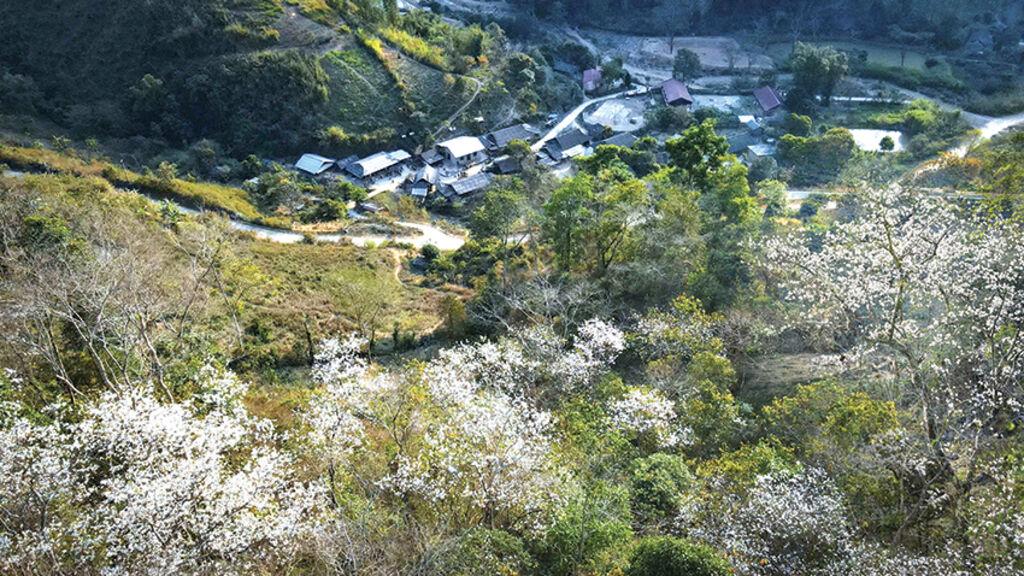 |
| Bauhinia blossoms during springtime in Dien Bien province__Photo: VNA |
Not far from the historical site of A1 hill is the A1 National Martyrs Cemetery, which was built in 1958 and embellished into a cultural-historical work in 1994. Its mortuary building was designed to resemble the traditional stilt house of the Thai people.
Vu Thi Tuyet Nga, deputy director of the Museum of Dien Bien Phu Victory, said to become a tourist center of the northwestern region and the country, Dien Bien province should conserve and promote the values of cultural relics in general and the Dien Bien Phu battlefield relics complex in particular. This is one of the contents identified in the Scheme on conservation, embellishment and promotion of the values of the Dien Bien Phu battlefield relics complex up to 2030. She noted that long-term investment in conservation and embellishment of the Dien Bien Phu relics complex and cultural-historic space is an effective way to bring into play the province’s unique humane tourism resources that mark the difference of tourism products of Dien Bien with those of other provinces in the northwestern region.-








